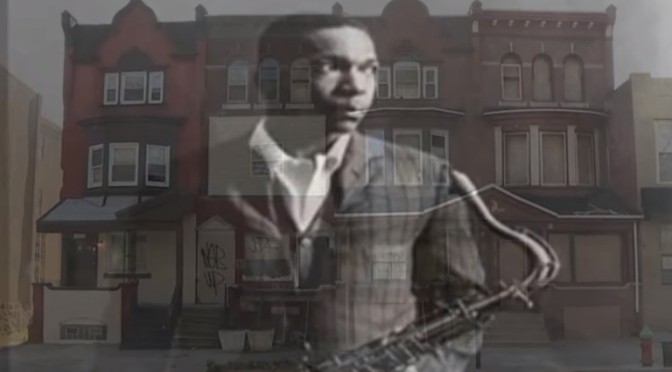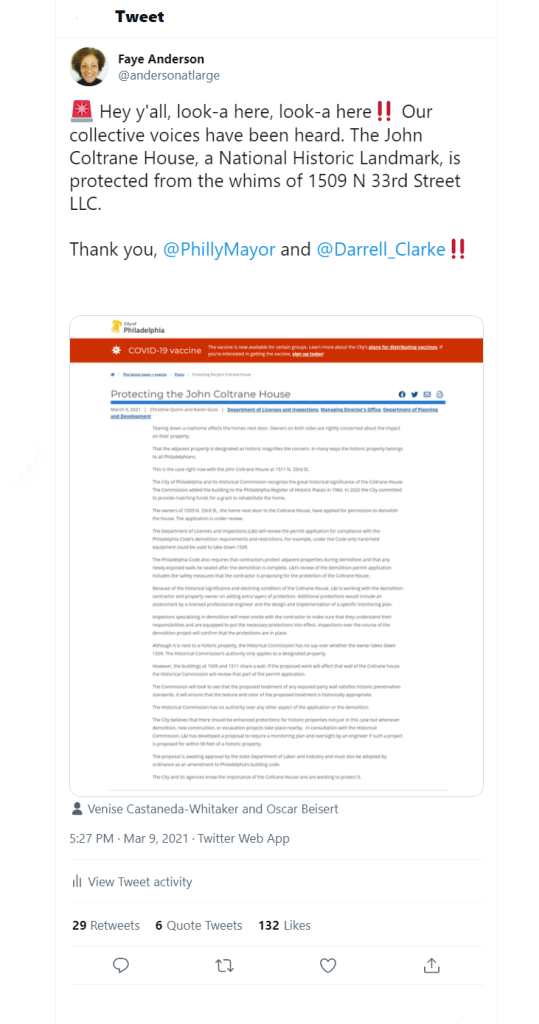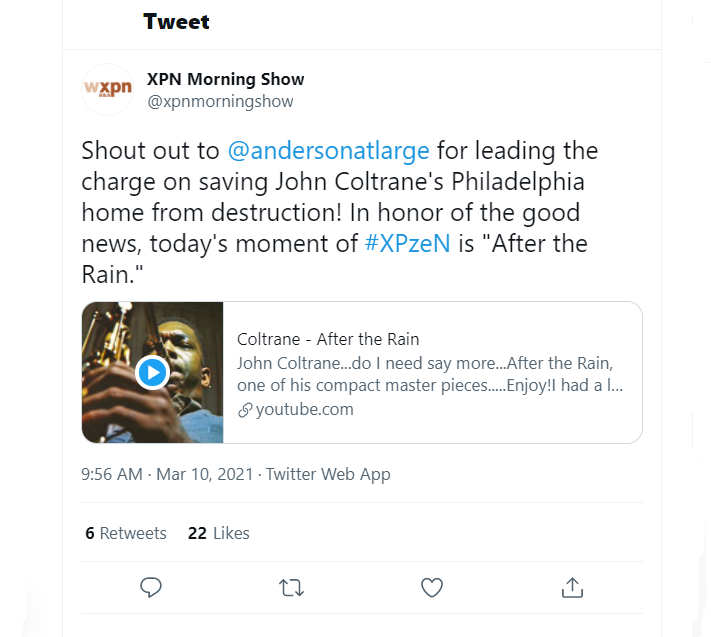March 10-16, 2024 is Sunshine Week, a time to celebrate transparency, and the right to know what government officials are doing and saying behind closed doors. I used the Freedom of Information Act (FOIA) and Pennsylvania’s Right-To-Know Law to tell the story of the deteriorating condition of the John Coltrane House and the drama over ownership of the National Historic Landmark.
John Coltrane’s beloved “Cousin Mary,” Mary Alexander, sounded the alarm about the physical deterioration of the property as early as 1987.

From time to time I would check on the Coltrane House. Without access to the property, I reported illegal dumping and other violations visible from the public right of way. I am a cold weather person but on a hot and humid morning in August 2019, I felt an overwhelming urge to stop by the Coltrane House. I later learned that Cousin Mary joined the ancestors the same day that I was snooping around her former home. I vowed then that I would do whatever I could to preserve the historic landmark in public memory.

I successfully nominated the Coltrane House for inclusion on 2020 Pennsylvania At Risk. Designation does not bring any resources; instead, it brings renewed media attention to a historic landmark at risk of demolition by neglect.
News stories about the designation were published in February 2020. I had a conference call with Ravi Coltrane to explore next steps on March 13, 2020. I have not spoken with him since that conversation. However, news articles about the At-Risk designation were included as exhibits to the case that Ravi and Oran Coltrane filed to gain possession of the property on April 27, 2022.
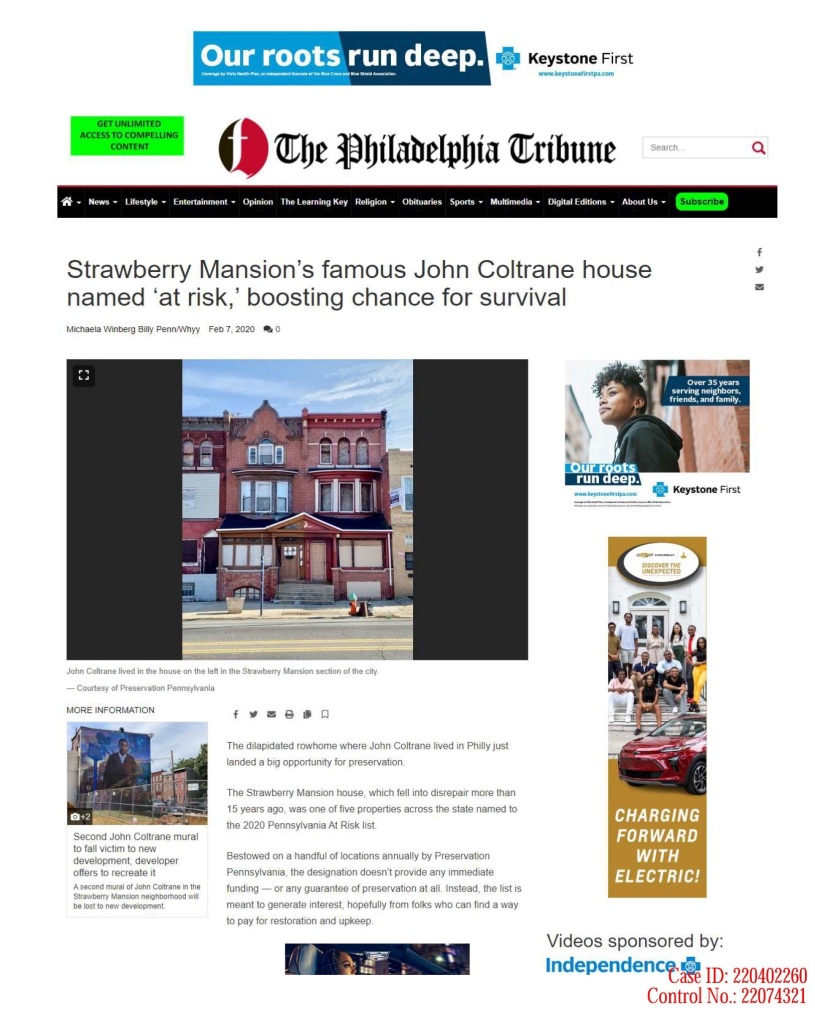
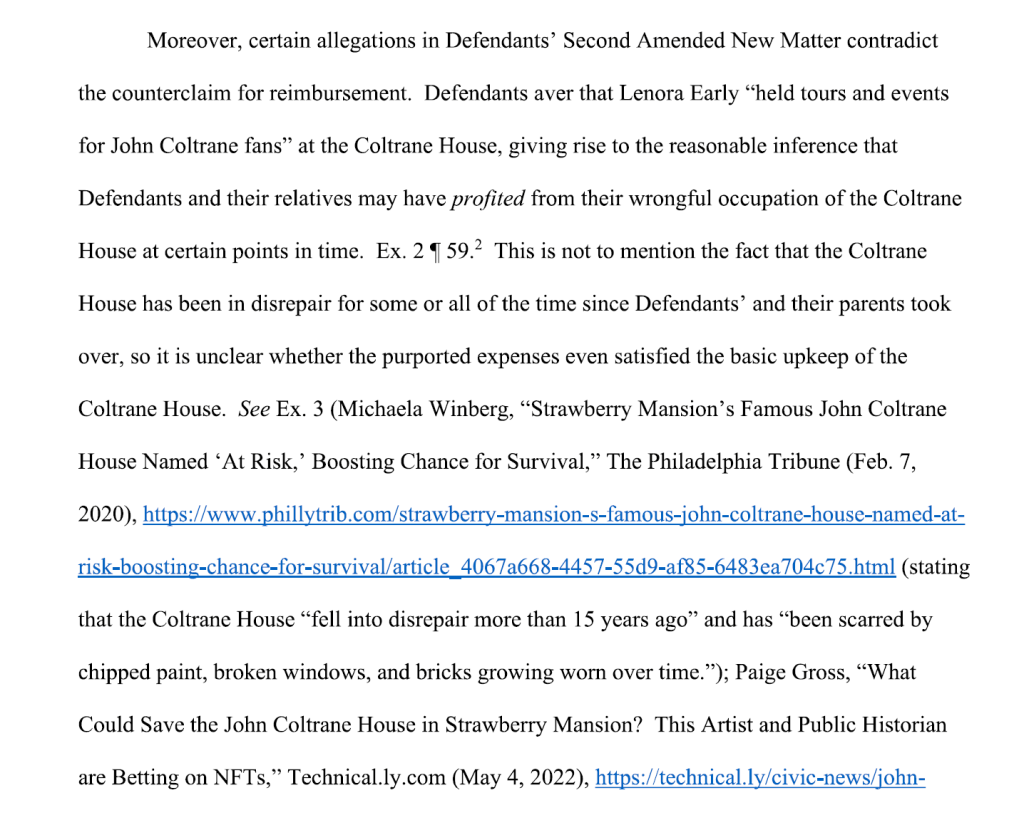
Fast forward to May 2023, the parties reached an agreement in principle. The outcome was predetermined given the existence of a valid will. Under the terms of their grandmother’s will, Ravi and Oran should have gained possession of the property upon the death of Cousin Mary on August 31, 2019.
Norman Gadson is still listed as the owner on property and tax records. Last week, the New York Times reported the African American Cultural Heritage Action Fund, a program of the National Trust for Historic Preservation, “will assist in coordinating and financing the transfer of Coltrane’s home from its current owner back to his family.”
The Coltrane House is the first site selected for the new Descendants and Family Stewardship Initiative. Brent Leggs, executive director of the Action Fund, said:
Descendants and families have been doing this work for centuries on an informal basis. The initiative is about empowering descendants and families through historic preservation more formally. Our role is to give them the resources and technical expertise they need to protect and preserve the physical evidence of the past and share their profound stories with the American public.
It has taken nearly four decades, but the John Coltrane House will finally be restored. As I told Valerie Russ of the Phliladelphia Inquirer, my work is done. Mission accomplished.
























